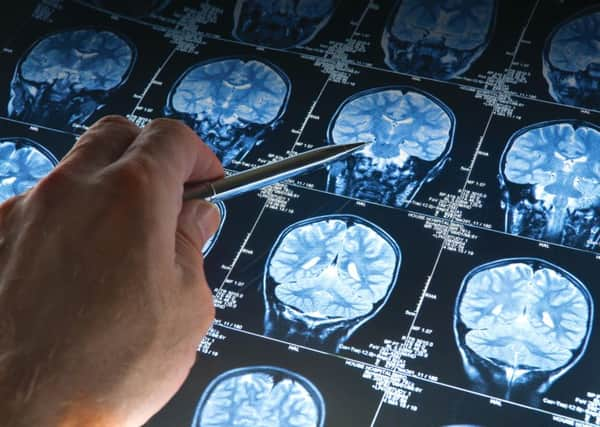Scottish study sheds light on MS brain cell change


Scottish scientists studying the brains of dead multiple sclerosis (MS) sufferers have made a breakthrough discovery that could offer new hope of treatment.
The study focused on cells in the brain that help to repair damage to nerve cells caused by the disease.
Advertisement
Hide AdAdvertisement
Hide AdResearchers identified various types of these cells – called oligodendrocytes. People with MS have different types of oligodendrocytes than healthy people, the study found.
The findings could shed new light on how the disease progresses and could also help scientists develop treatments.
Experts from the University of Edinburgh and the Karolinska Institute in Sweden analysed post-mortem brain samples from five people without neurological disease and four people with the most advanced form of multiple sclerosis, called progressive MS.
Working with researchers from the healthcare company Hoffmann-La Roche, the team used an advanced genetic analysis technique called single nuclear RNA-Seq.
This technique provides a snapshot of all the genes that have been switched on in a single brain cell, providing insights into how each individual cell functions.
By doing this on thousands of brain cells, the approach can build a detailed picture of all the cell types that are present in the brain from that person.
The researchers found there are several types of oligodendrocytes, and that the ratio of these cells in people with MS differs from healthy people.
These differences suggest the oligodendrocytes are functioning differently in the brains of people with MS, which might be key to understanding how disease progresses, the researchers say.
Advertisement
Hide AdAdvertisement
Hide AdMS occurs when the protective sheath that surrounds nerve cells – called myelin – becomes damaged. This means that nerve cells cannot transmit signals around the body as effectively. It also leaves nerve cells vulnerable to damage, and eventually the nerves can die.
Oligodendrocytes are found in the brain and spinal cord where they repair damaged myelin. In people with MS, this process does not work as well as in healthy people. Many treatments under development for MS are designed to target oligodendrocytes in the hope of boosting myelin repair.
Prof Charles ffrench-Constant, of the Medical Research Council Centre for Regenerative Medicine at the University of Edinburgh, said: “We found that oligodendrocytes are a diverse population of cells and that different types are likely to have different functions in the brain.”
Prof Anna Williams, of the Medical Research Council Centre for Regenerative Medicine at the University of Edinburgh, said: “Understanding which types of oligodendrocytes are most beneficial in repairing myelin will be crucial for maximising the chances of developing much-needed treatments for MS.”
Researchers say the differences in types of oligodendrocytes they found in people with MS might explain why their myelin repair process does not work as well.